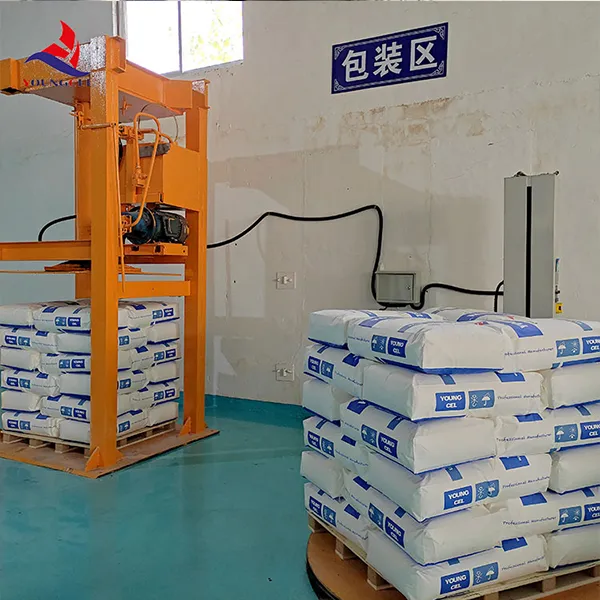Hydroxypropyl Methylcellulose An Overview of Its Properties and Applications
Hydroxypropyl Methylcellulose (HPMC) is a versatile cellulose ether derived from natural cellulose, which is primarily extracted from wood pulp or cotton. This non-ionic polymer is widely utilized in various industries due to its unique properties, including water solubility, film-forming ability, and thickening effects. Its chemical structure consists of hydroxyl and methoxy groups, which enhance hydrophilicity and contribute to its functional characteristics.
One of the most notable properties of HPMC is its water-soluble nature. When mixed with water, HPMC forms a viscous gel, making it an excellent thickening agent. This property is highly valued in the food industry, where it is used to improve texture, enhance mouthfeel, and stabilize emulsions. For instance, HPMC is commonly found in salad dressings, sauces, and ice cream, helping to maintain consistency and prevent separation.
Hydroxypropyl Methylcellulose An Overview of Its Properties and Applications
The construction industry also benefits from the use of HPMC, particularly in cement and gypsum-based products. When added to mortars and plasters, HPMC improves workability, adhesion, and water retention. This is particularly important in tile adhesives and wall coatings, where prolonged moisture retention allows for better setting and curing times. The inclusion of HPMC in construction materials helps achieve higher durability and greater resistance to cracking and shrinkage.
hydroxypropyl methylcellulos

Moreover, HPMC has gained popularity in the cosmetics and personal care industry. Its emollient and emulsifying properties make it a desired ingredient in lotions, creams, and gels. HPMC aids in the formulation of products by ensuring the proper mixing of oil and water phases while providing a smooth and pleasant application experience. Its ability to form a film on the skin also contributes to the longevity of cosmetic products.
One of the advantages of HPMC is its safety profile. As a non-toxic and biodegradable polymer, it is considered safe for use in food, pharmaceuticals, and personal care products. This makes HPMC an attractive choice for manufacturers looking to comply with regulatory standards while promoting sustainability.
Despite its numerous benefits, it is essential to consider the correct usage and concentration of HPMC in formulations. The optimal concentration varies depending on the intended application and desired properties of the final product. Manufacturers often conduct extensive research and testing to determine the best formulation for their specific needs.
In conclusion, Hydroxypropyl Methylcellulose is a multifunctional polymer with a wide range of applications across several industries. Its unique properties, such as water solubility, thickening abilities, and film-forming characteristics, make it a valuable ingredient in food, pharmaceuticals, construction materials, and personal care products. As industries continue to seek innovative solutions, HPMC is likely to remain a popular choice due to its versatility, effectiveness, and safety. The ongoing research into its potential applications also signifies a promising future for HPMC in various technological advancements.
-
HEC 100000 Hydroxyethylcellulose for Paint | Superior ThickeningNewsAug.30,2025
-
Wall Putty Rdp Powder Packaging DesignNewsAug.29,2025
-
Introduction to Hpmc Hydroxypropyl Methyl CellulosNewsAug.29,2025
-
Hpmc Industri Grade IntegrationNewsAug.29,2025
-
How to Choose the Right Construction AdhesiveNewsAug.29,2025
-
Construction Adhesive StrengthNewsAug.29,2025




